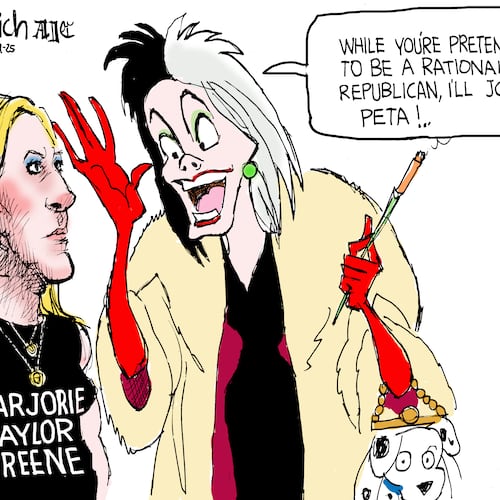Please note: The views and sentiments expressed here are those of the signed individuals and are not intended to represent those of their employers or affiliated institutions.
Dear Georgia lawmakers,
We are pediatric emergency medicine physicians in Georgia. We have committed our professional lives to caring for each and every child that comes through the door of our emergency departments.
In recent months, we have seen a dramatic increase in the number of children presenting with gunshot wounds.
Our hearts break along with their families for the loss of life, health and promise these children experience.
We too frequently see guns taken lightly, jokingly addressed, used as props, emphasized in music, or glorified in media. But we would like to share with you what we see too often when boys and girls are actually shot - whether by accident or intention.
First, there is the alert about an incoming patient. Often the information is limited to the approximate age of the pa1ent and some hint as to their condition:
“Awake and alert.”
“Unresponsive.”
“CPR in progress.”
The team forms up in the trauma room. Donning gloves, goggles and plastic gowns. Lead physician and nurse assign roles:
“Do we have blood ready?”
“We will want a quick X-ray.”
“Set up the chest tube tray.”
“Who will work on IV access?”
As everyone gets into position, the words “they are pulling up” are followed by an expectant pause, a brief moment of quiet. Each person with their own thoughts and prayers:
“Please let me do my job the best I can.”
“Please let the team function well.”
“Please, please let the patient be ok.”
Emergency Medical Services (EMS) pushes the stretcher into the room.
Sometimes the patient is crying in pain; more often they are quiet in stunned shock -- pale and sweaty skin, asking for water as their body tries to replace the life blood they are losing.
Or the worst of all, they are unresponsive and already efforts are in progress to breathe for them, pushing on sometimes very tiny chests trying to circulate what little blood is left in their hemorrhaging bodies.
Now the expectant pause is over. Everyone is busy – cutting clothing off the patient, placing or checking IVs. The physician leader trying to manage this chaos while assessing the patient. “Where are the injuries?” We quickly inspect the patient looking for the telltale holes.
It is amazing just how small those holes in the body can be. Not much bigger than a penny sometimes. Those tiny holes on the surface only hint at the damage done inside the body. The blood pooling where it should not – around the heart and lungs, impairing their function, in the abdomen where it can be hard to detect until too much is lost, into the skull, compressing the brain and causing increasing pressure and damage.
We push fluids and transfuse blood. We stabilize airways. The sickening “pop” of a chest tube being pushed between a child’s ribs, followed by a rush of blood and air, is hard to forget. We obtain X-rays trying to determine the extent of the damage.
“Is the patient stable for CT scan?”
“Are we going straight to the operating room?”
“Push another unit of blood.”
“Start chest compressions.”
Or the worst -- “stop chest compressions. Time of death … .”
The family arrives, stunned, sometimes in bloody clothing from where they clutched their child while awaiting help.
The chaplain sits with them, offers a gown. The physician speaks with them as soon as we are able, and we do our best to answer and comfort:
“Will my baby be OK?”
“Will he walk again?”
“When can I see her?”
We give what information we know:
“Your child is in the CT scanner.”
“Your child is going to the operating room now.”
Or the heartwrenching, “I’m so very sorry, we did all we could, but your child has died.”
We return to our jobs, to the other patients waiting. The trauma room is cleaned of blood, bandages and cut-off clothing and prepared for the next patient. We finish our shifts and we head home. We shower and change. We hold our families close and try not to think about the loss of life, of potential, that we witnessed at work.
But our lives -- and those of our patients and their families -- are forever changed.
Guns are not a joking matter. Our children are suffering and dying from firearm injuries. We implore you to show leadership in making this world safer for our children. We plead with you to support and implement laws to keep our children safe, including safe gun storage requirements, universal background checks and “red flag” laws to keep guns out of the hands of potentially dangerous people.
Most importantly, we beg you to use your influence to stem the celebration of gun culture, and model care and concern for our children.
Sincerely,
Wendalyn Little, M.D., M.P.H.
Maneesha Agarwal, M.D.
Kelsey Allen, M.D., M.P.H.
Bola Akinsola M.D.
Yvonne Atherly-John. M.D.
Tal Berkowitz, M.D.
Reena Blanco, M.D.
Rebecca Burger, M.D.
Sofia Chaudhary, M.D.
Jacinta Cooper, M.D.
Brian Costello, M.D.
Alesia Fleming, M.D.
Kiesha Fraser Doh, M.D.
Michael Greenwald, M.D.
Mayura Gujarathi, M.D.
Peter Gutierrez, M.D.
Sherita Holmes, M.D.
Ruth Hwu, M.D.
Shobhit Jain, M.D.
Naghma Khan, M.D.
Sonya Kheshti, M.D.
Joseph Langham, M.D.
Sarah Lazarus, D.O.
Jeffrey Linzer, M.D.
Lauren Middlebrooks, M.D.
Alexandra Monroe, M.D.
Claudia Morris, M.D.
Brittany Murray, M.D.
Carrie Ng, M.D.
Katherine Nicholson, M.D.
Karli Okeson, M.D.
Christopher Rees, M.D.
Tamar Robinson, M.D.
Jennifer Rosario, M.D.
Beth Schissel, M.D.
Lekha Shah, M.D.
Samuel Spizman, M.D.
Carmen Sulton, M.D.
Deborah Young, M.D.
Ronine Zamor, M.D.
Keep Reading
The Latest
Featured

